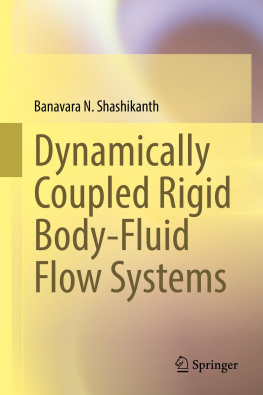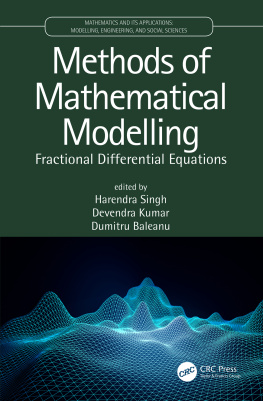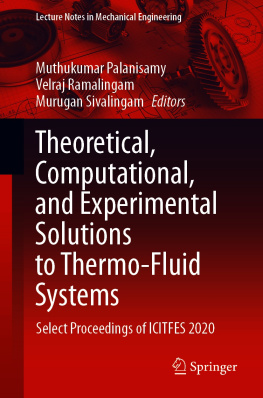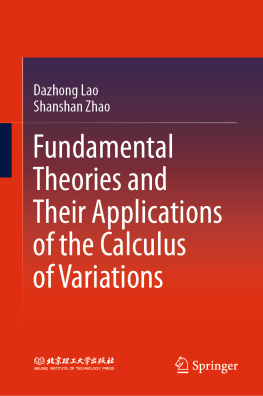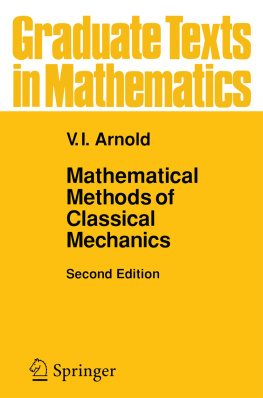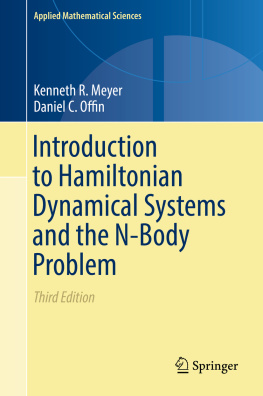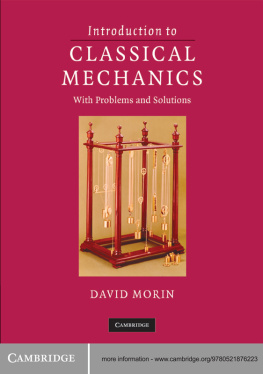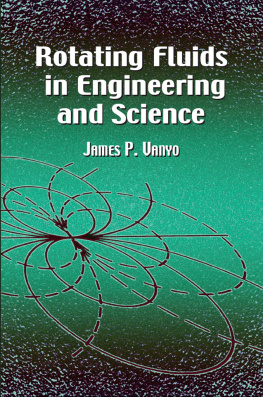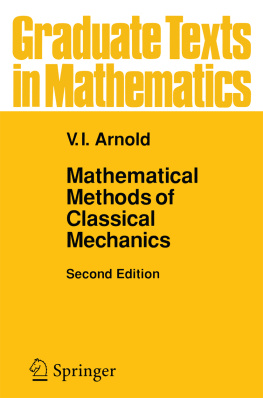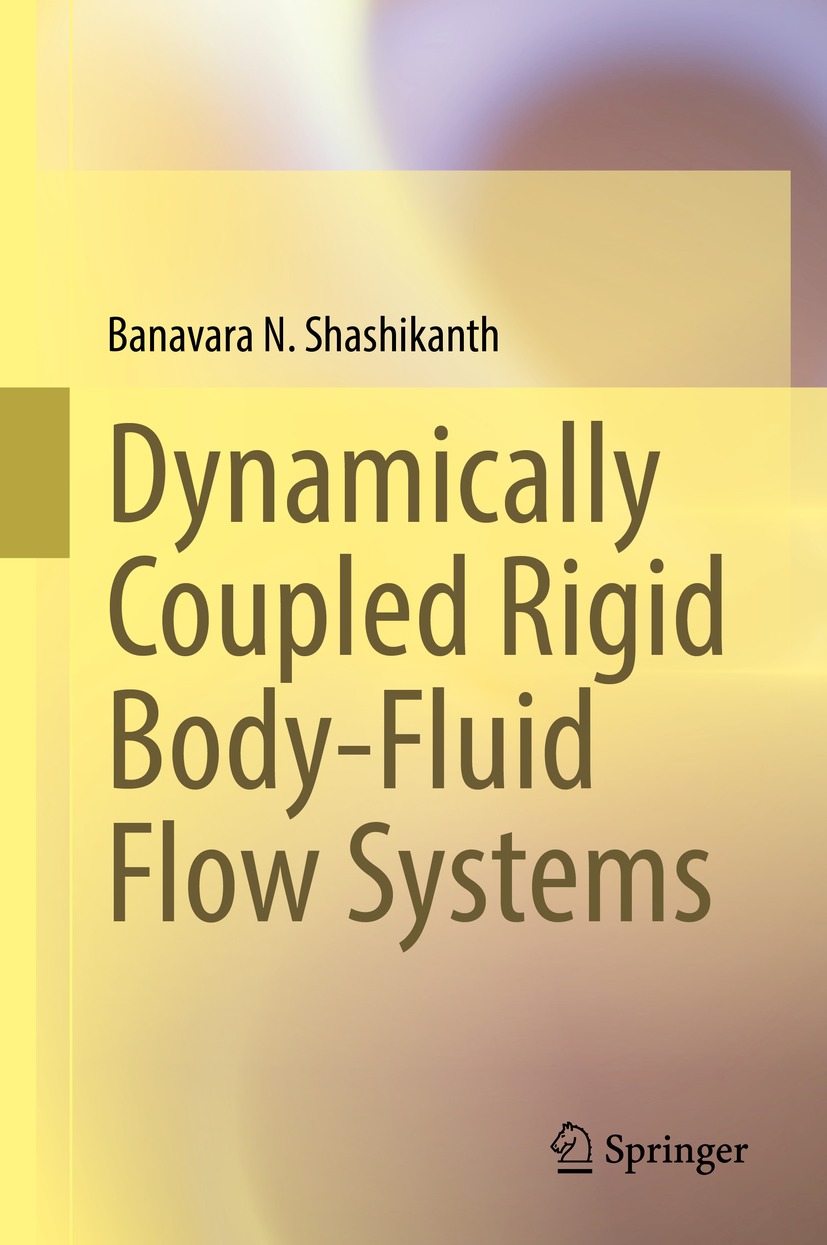Banavara N. Shashikanth
Mechanical and Aerospace Engineering, New Mexico State University, Las Cruces, NM, USA
ISBN 978-3-030-82645-1 e-ISBN 978-3-030-82646-8
https://doi.org/10.1007/978-3-030-82646-8
Mathematics Subject Classication (2010): 76B47 76M60 37K05 37J15 53D20 37N05 70H03 70H05 76B07 97M50
Springer Nature Switzerland AG 2021
This work is subject to copyright. All rights are reserved by the Publisher, whether the whole or part of the material is concerned, specifically the rights of translation, reprinting, reuse of illustrations, recitation, broadcasting, reproduction on microfilms or in any other physical way, and transmission or information storage and retrieval, electronic adaptation, computer software, or by similar or dissimilar methodology now known or hereafter developed.
The use of general descriptive names, registered names, trademarks, service marks, etc. in this publication does not imply, even in the absence of a specific statement, that such names are exempt from the relevant protective laws and regulations and therefore free for general use.
The publisher, the authors and the editors are safe to assume that the advice and information in this book are believed to be true and accurate at the date of publication. Neither the publisher nor the authors or the editors give a warranty, expressed or implied, with respect to the material contained herein or for any errors or omissions that may have been made. The publisher remains neutral with regard to jurisdictional claims in published maps and institutional affiliations.
This Springer imprint is published by the registered company Springer Nature Switzerland AG
The registered company address is: Gewerbestrasse 11, 6330 Cham, Switzerland
Preface
The time-honored method of studying the dynamics of fluid-solid interaction problems has been to either fix the solid or to prescribe its motion, for example, a steady translation or a regular oscillation. Investigations then focus primarily on the dynamics of the fluid flow and the study of the various features that develop, such as, for example, boundary layers, vortices, shock waves, and turbulence. An equally important focus, especially in engineering applications, is on computing the fluid dynamic loads exerted on the solid with a view to designing it to withstand these loads as it executes the prescribed motionssome familiar engineering examples being the aerodynamic loads on an aircraft and the hydrodynamic loads on a submarine. The dynamics of solidsrigid and deformable, in the absence of any ambient fluidis also a well-researched topic. In each of these two principle branches of mechanics, many fundamental results have been obtained and many fundamental principles elucidated, starting from the very birth of the subject of theoretical mechanics.
Relatively far less attention has been paid to the dynamics of fluid-solid interaction problems where the solid is not constrained to stay put or move in a prescribed manner, and is free to move in response to the instantaneous fluid stress field on its surface. The focus in such a setting is as much on the dynamics of the solid as on the dynamics of the fluid. Moreover, the motion of the solid in turn influences the flow of the fluid around it, thereby intricately coupling the fluid and the solid dynamics. This is the definition of the dynamically coupled setting, and the topic, in the authors opinion, merits consideration as an independent branch of theoretical mechanics.
Despite the fact that Kirchhoff investigated perhaps the first problem in this setting as far back as the nineteenth century, and despite the fact that there are examples of such interactions all around us in natureobjects lifted up by a strong wind, objects tossed in or floating on waterthe topic did not attract much research interest for a long time. The reasons are not difficult to understand. From a mathematical point of view, coupled dynamics is invariably nonlinear. In addition to the complex, inherent nonlinearities of a fluid flow, one must now also deal with the nonlinear response of the body, and the dynamic coupling. The topic therefore remained more or less dormant till the birth and development of the subjects of dynamical systems and nonlinear dynamics. Theoretical investigations in the meanwhile were mainly restricted to cases where linearization techniques could be used, namely in the study of a solid dynamically coupled with water waves (floating objects) whose equations are amenable to linearization. The case of a solid dynamically coupled with vortices, whose equations are not linearizable, had to wait for almost a 120 years after Kirchhoffs work before it was investigated. And from the point of view of applications, traditional engineering vehicles designed for locomotion in a fluid environment (aircraft, ships, submarines, etc.) rarely required knowledge of the dynamics of an uncontrolled solid object.
A third reason may be postulated as to why the subject did not garner much attention. The fact is dynamically coupled systems with buoyant solid objects fully immersed in a fluid environment have been studied, though again not so much the nonlinearities. This is essentially the subject of bodies falling or rising freely in a fluid environment. The notion of a body free to respond to fluid stresses was perhaps more often associated with such problems. Here gravity typically is the dominant feature, and even when interesting dynamical features are seen, such as, for example, the deformations of rising bubbles or the oscillations of a falling sheet of paper, gravity is an essential ingredient of such dynamics. For a long time, there was probably not enough motivation, theoretically or in the real world, to consider the case of neutrally buoyant bodies fully immersed in a fluid environment.
The subject of dynamical systems/nonlinear systems has grown enormously in the past four decades or so, while at the same time there has been development of new green paradigms for the design of engineering devices dynamically interacting with fluids. For example, underwater biomimetic vehicles that typically have limited propulsive power, unlike traditional vehicles, and need to maneuver optimally in the fluid environment. Understanding of the coupled dynamics of fluid and vehicle therefore becomes paramount. There are also other engineering examples, where the dynamic coupling is partial, for example, floating offshore wind turbines, and it is important when dealing with such problems to have a knowledge of the fully dynamically coupled problem.
Theoretical investigations on the topic of dynamically coupled systems therefore have been growing at a slow but steady rate. It seems timely and appropriate to present a compilation of important work done so far in the area, and to present this in a framework whose foundations are Kirchhoffs equations. This also allows bringing together under a common banner topics which have traditionally been studied in separate research groups, such as, for example, the system of a rigid body and waves, and the system of a rigid body and vortices. The focus is on Lagrangian and Hamiltonian methods. Functional analytic approaches that investigate existence and smoothness of solutions in Eulerian and Navier-Stokes settings are not covered. Following an introduction to Kirchhoffs equations of motion, the book discusses several extensions of Kirchhoffs work, with the focus on the extensions involving vortices. The equations of motions of these systems and their Lagrangian and Hamiltonian formulations are presented and discussed. In some cases, detailed derivations are included, especially on the Euler-Lagrange equations for some of the models which, to the best of my knowledge, have not been published before. In addition, wherever appropriate, I have also discussed applications.

